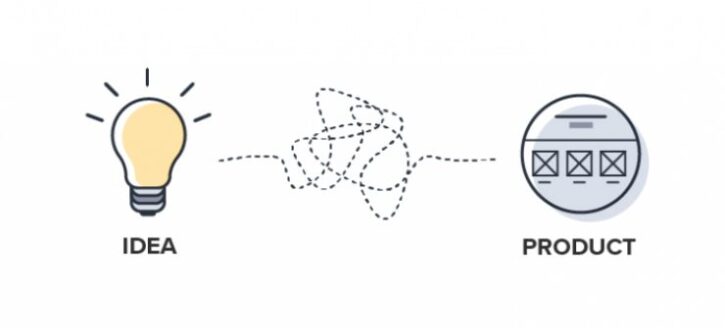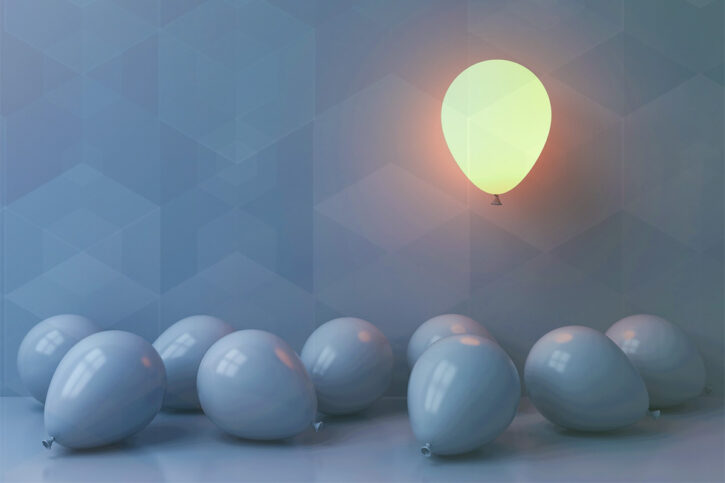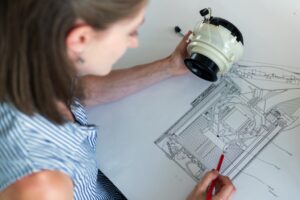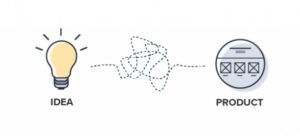
Source: meidum.com
All creators, from renowned artists to cutting-edge inventors, encounter moments when inspiration seems fleeting, and ideas remain just out of reach. These hurdles, commonly known as creative blocks, aren’t just frustrating; they can significantly impede innovation and progress.
There are several types of creative blocks. Some arise from internal pressures like self-doubt or fear of failure. Others stem from external factors such as criticism or over-expectation. Regardless of the cause, understanding them is the first step to surmounting them. Delving into psychology reveals that our brains, when stressed or overwhelmed, tend to stick to familiar pathways. This is an evolutionary survival mechanism but not particularly helpful when we’re trying to innovate.
The Power of Mindfulness in Creativity
Amidst our chaotic lives, a still mind can seem elusive. Yet, it’s precisely this calm, centered mindset that can propel an inventor past a creative roadblock. Mindfulness, or the practice of being present, offers inventors a fresh perspective by quieting the noise and allowing inspiration to seep in.
Begin with meditative practices. Allocate a few minutes daily to sit in silence, focusing on your breath. This simple act trains your brain to detach from distractions, granting clarity. For inventors, journaling can also serve as a mindfulness exercise. Documenting thoughts without judgment can often lead to unexpected epiphanies. And it’s not just anecdotal advice: Renowned inventors like Nikola Tesla often credited moments of quiet contemplation as the birthplace of their innovations and InventHelp often suggest mindfulness as an important part of the process.
Breaking Routine: Disruptive Thinking for Inventors

Routine, while comforting, can be the nemesis of innovation. Doing things the same way leads to thinking the same way. But what if you could jolt your brain out of its comfort zone? Disruptive thinking challenges conventional patterns, fostering originality.
Embracing a new hobby, changing your daily route, or even rearranging your workspace can spark new neural connections. Consider Sir Isaac Newton: an apple’s simple fall, observed during a period of isolation from his usual environment, led to the revolutionary theory of gravity which is a subject you can always read more about.
Collaboration and Brainstorming: Unlocking Creativity
Two minds, as they say, are better than one. Collaborating with others provides a fresh perspective, challenging your ideas and pushing boundaries. Brainstorming sessions, when executed efficiently, can be goldmines of innovation.
For effective collaboration, maintain an open environment where every idea, no matter how outlandish, is welcome. Take the invention of the Post-it Note: what began as a failed attempt to create a super-strong adhesive at 3M turned into a world-renowned product, all thanks to collaborative reimagining.
Embracing Failure: Learning from Setbacks

Failure, often seen as the antithesis of success, can actually be its catalyst. The fear of making mistakes can paralyze inventors, stymieing any creative progress. Yet, in reframing these setbacks as stepping stones, we unlock unparalleled growth.
Take Thomas Edison, whose 1,000 unsuccessful attempts at inventing the light bulb are as legendary as his eventual success. Each “failure” was, in fact, a lesson leading him closer to his groundbreaking invention.
Cultivating a Creative Environment
Your environment, both mental and physical, profoundly impacts creativity. Spaces cluttered with distractions or devoid of inspiration can stifle even the most fervent inventive spirit.
To optimize creativity, ensure your workspace is both functional and inspiring. Add elements of nature, indulge in art, and immerse in diverse cultures. After all, creativity doesn’t exist in a vacuum; it’s a culmination of experiences, perspectives, and knowledge.
Tools and Resources for Creative Problem-Solving

In today’s digital age, a plethora of tools exist to bolster creativity. Platforms like MindNode facilitate brainstorming, while apps like Lumosity sharpen cognitive skills. Beyond digital tools, traditional methods, like mind maps or tactile prototypes, can often offer the tactile feedback inventors need.
Case Studies: Navigating Creative Blocks in Inventors’ Journeys
History is replete with inventors who’ve grappled with creative blocks. Analyzing their journeys offers a roadmap for modern creators. For instance, Alexander Graham Bell initially envisioned the telephone as a device to help the deaf. His broader vision materialized only after numerous iterations and challenges.
For today’s inventors, these historical vignettes serve as both inspiration and guide. They remind us that every roadblock, however insurmountable it seems, can be overcome with persistence, strategy, and a touch of creativity.









